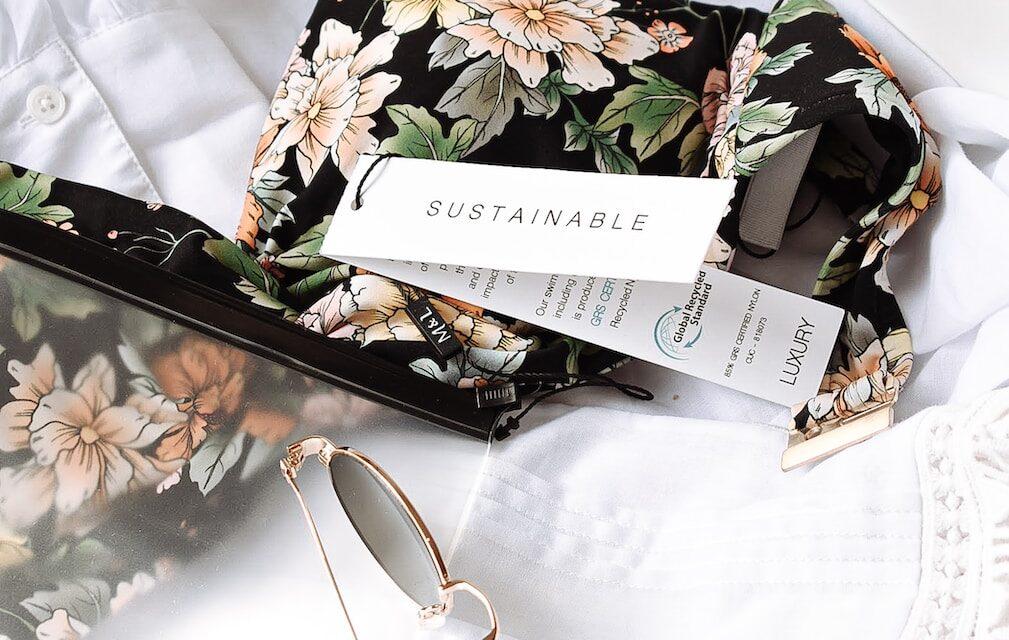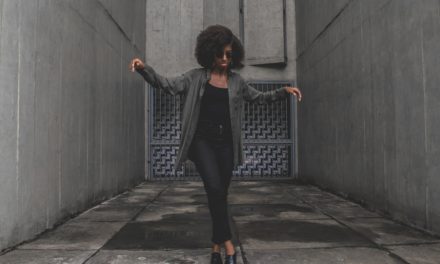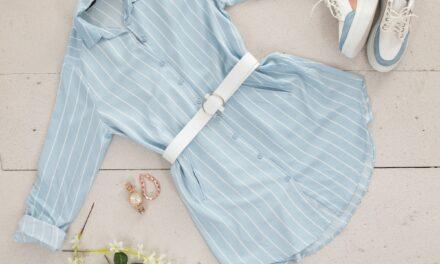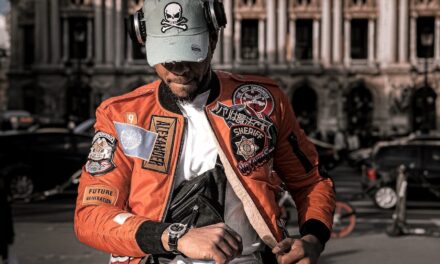The fashion industry has always been notorious for its negative impact on the environment, with fast fashion being one of the biggest culprits in polluting our planet. However, in recent years, there has been a growing awareness about sustainability and conscious consumerism that has driven many individuals and brands to explore sustainable alternatives. One such solution is the formation of sustainable fashion collectives.
A sustainable fashion collective is a group of independent designers or brands that come together to create a platform that promotes sustainable practices. It could be an online community or a physical space where members can collaborate, share resources, and work towards creating a more eco-friendly future for the fashion industry.
The Importance of Sustainable Fashion
The urgency to adopt more sustainable practices in the fashion industry has never been greater than it is now. The global apparel market produces 150 billion garments annually, with only 15% of them being recycled or upcycled.
The rest end up in landfills or incinerators, contributing significantly to pollution and carbon emissions. Moreover, unethical labor practices prevalent in many parts of the world also plague the industry.
Sweatshops and child labor are still major issues despite increasing attention from consumers. Sustainable fashion addresses both these concerns by creating garments that are made to last longer through durable design and materials while minimizing their impact on the environment throughout their lifecycle.
In addition, it also ensures fair wages and humane working conditions for workers involved in production processes. As consumers become increasingly knowledgeable about these issues, they demand transparency from brands they support regarding their sustainability practices.
Thus, sustainability is no longer just an option but rather an essential aspect of any successful brand’s operations. : The need for collective action among designers and brands committed to sustainability solutions is evident as traditional modes of operation do not seem to offer a satisfactory solution.
The concept of the sustainable fashion collective is gaining popularity as it provides a platform for brands to collaborate and implement sustainable practices effectively. The rest of the article explores this concept in-depth, from what it entails, how to join one, benefits they offer, success stories, and challenges faced by these collectives.
The Concept of a Sustainable Fashion Collective
A sustainable fashion collective is a group of individuals and brands working together towards a common goal – the promotion of sustainability in the fashion industry. The members may include designers, manufacturers, retailers, bloggers, and activists who share the same values and principles when it comes to producing and consuming fashion. Through this collaborative effort, sustainable fashion collectives aim to create positive social and environmental impacts while ensuring economic viability.
The concept of a collective is not new in the fashion industry. In fact, it has been around for decades as designers often collaborate with other creatives to produce capsule collections or join forces with other brands for collaborations.
However, in recent years, there has been an increased interest in forming collectives that focus on sustainability practices. This shift towards collective action is driven by the recognition that individual efforts are not enough to address the urgent issues facing the industry today.
How it Applies to Sustainable Fashion
The concept of a sustainable fashion collective applies directly to addressing environmental and social challenges such as waste reduction, ethical production practices, biodiversity conservation, fair labor conditions, diversity/inclusion in design leadership roles among others. Collectives provide a platform for members to exchange knowledge about best practices in sustainability while also fostering collaboration on mutually beneficial projects such as sharing resources/costs to reduce waste or creating programs that support marginalized communities working within and across supply chains. Through their shared vision for making the world a better place through sustainable fashion practices; members benefit from an enhanced sense of community building which can lead them towards meaningful relationships both personally and professionally.
Examples of Successful Sustainable Fashion Collectives
There are many successful examples of sustainable fashion collectives operating around the globe today. One notable example is The Slow Factory Foundation based in New York City which focuses on promoting sustainable manufacturing processes through education campaigns that highlight environmentally friendly materials like recycled textiles.
Another example is Fashion Revolution, a global movement that promotes transparency in the fashion industry. The collective has members in over 100 countries and focuses on bringing awareness to human rights and environmental issues within the fashion industry while driving positive change for all stakeholders involved.
There is Redress based in Hong Kong whose aim is to reduce waste generated by the fashion industry. Redress hosts an annual competition called “The Redress Design Award” which encourages designers to utilize sustainable practices when designing their collections.
Additionally, they promote upcycling and recycling efforts by encouraging designers to use materials that would otherwise go to waste. These examples demonstrate how collectives can create meaningful change within the fashion industry while also promoting sustainable practices that benefit everyone involved in the production process from workers to consumers alike.
Benefits of Joining a Sustainable Fashion Collective
Access to Resources and Knowledge
Joining a sustainable fashion collective can provide you with access to resources and knowledge that can help your brand succeed while also positively impacting the industry. Many collectives offer workshops, seminars, and training sessions that cover topics such as sourcing sustainable materials, reducing waste in production processes, and marketing strategies for eco-friendly brands. Additionally, joining a collective means gaining access to a network of individuals who are passionate about sustainability and willing to share their experiences and expertise.
Collectives often partner with manufacturers, suppliers, and other stakeholders in the fashion industry who specialize in sustainable practices which can provide members with discounts on materials or production services. These resources may not be readily available to individual designers or small brands but by joining a collective they become accessible.
Collaborative Opportunities with Like-Minded Individuals and Brands
By joining a sustainable fashion collective, you open yourself up to collaborative opportunities with individuals or brands that share your values. Collaborations between members of the same collective can lead to exciting new design ventures which showcase different talents from various people in the community.
Through collaborating on projects members of collectives can help one another grow their businesses while also working together towards shared goals towards sustainability. Members may even establish long-term partnerships outside of their respective collectives.
Increased Visibility and Exposure for Your Brand
Being part of a sustainable fashion collective increases visibility for your brand. Shared social media campaigns or events hosted by the collective allow smaller brands within the group an opportunity to gain exposure without having large marketing budgets. Consumers interested in sustainability have started collectively seeking out eco-friendly options leading them towards discovering new brands within the cooperative environment.
Furthermore, most sustainably focused consumers appreciate knowing more about where products come from – why they were made using certain materials or under certain circumstances – something which is easily communicated within a collective. Being associated with a collective can also enhance your brand image as consumers are more likely to associate a brand that is part of a community with values such as transparency, collaboration, and sustainability.
How to Join a Sustainable Fashion Collective
Joining a sustainable fashion collective can be an excellent opportunity for your brand to collaborate with like-minded individuals and companies. However, finding the right collective for your brand can be a challenging task. Here are some tips on how to join a sustainable fashion collective:
Researching and Finding the Right Collective for Your Brand
The first step in joining a sustainable fashion collective is researching and finding the right one that aligns with your brand’s values and goals. There are several ways to find a suitable collective:
- Browse online directories: Several online directories list various sustainable/ethical fashion collectives worldwide; this is an excellent way to start your search.
- Attend industry events: Attending conferences, trade shows, or other events related to sustainable/ethical fashion is another way of finding collectives. Such events often invite established collectives as speakers or exhibitors.
- Talk to industry peers: Reach out to other designers, manufacturers, or retailers who work in the sustainable/ethical fashion space. They may have recommendations or be members themselves.
Application Process and Requirements
Sustainable fashion collectives usually have an application process that involves vetting applicants based on their sustainability values, product quality, brand vision, among other criteria. The application process varies widely depending on the specific collective’s requirements; some may only require an email submission of your products’ images and descriptions while others may require more detailed information about your business.
If you decide that joining a sustainable fashion collective would benefit your brand’s goals, take some time to understand their membership requirements thoroughly. Ensure that you have all the necessary documentation ready before applying.
Tips for Making the Most Out of Your Membership
Once you become a member of a sustainable fashion collective, there are several ways to make the most out of your membership:
- Participate in collaborative projects: Sustainable fashion collectives often organize collaborative projects that bring members together on a creative level. This is an opportunity for your brand to showcase its expertise and collaborate with designers, manufacturers, or retailers in other areas of the industry.
- Attend events: Collectives often organize events such as pop-up shops, runway shows, trade shows, or workshops. Such events provide valuable networking opportunities and can help boost your brand’s visibility.
- Stay engaged with the community: Stay active within the collective’s community by attending meetings, participating in online forums or social media groups. Engaging with other members helps to build relationships within the industry and can lead to future collaborations or partnerships.
Joining a sustainable fashion collective requires effort and time investment. It is important to research and find the right collective that aligns with your brand’s values and goals before applying. Once accepted into a collective, staying engaged with other members and participating in collaborative projects can help maximize your membership benefits.
Challenges Faced by Sustainable Fashion Collectives
Limited funding and resources
One of the biggest challenges that sustainable fashion collectives face is limited funding and resources. Unlike larger corporations, these collectives are often made up of small businesses or independent designers who may not have the financial means to invest in expensive sustainability initiatives. This can make it difficult for them to meet the high standards of sustainable fashion without compromising their quality or pricing.
To overcome this challenge, many sustainable fashion collectives have turned to crowdfunding or seeking out grants from organizations that support sustainable fashion. Additionally, some collectives have found success in partnering with larger brands or retailers who share their values and can provide financial support.
Difficulty in reaching mainstream audiences
Sustainable fashion has gained a lot of traction in recent years, but it still struggles to reach mainstream audiences. Many consumers are unaware of the negative impacts that fast fashion has on the environment and human rights, which can make it difficult for sustainable fashion collectives to gain widespread recognition.
To overcome this challenge, some collectives have focused on education and outreach through social media campaigns and events. By educating consumers about the importance of sustainable practices and showcasing their unique designs, they hope to inspire more people to make conscious choices when shopping for clothing.
Balancing individual brand goals with collective goals
Another challenge faced by sustainable fashion collectives is finding a balance between individual brand goals and collective goals. While each member may have their own vision for their brand, it’s important that they work together towards common sustainability goals as a collective.
To address this issue, many collectives have developed clear guidelines and expectations for members regarding sustainability practices. They also encourage open communication between members to ensure everyone’s voices are heard and respected.
Influence on industry norms
Despite these challenges, sustainable fashion collectives have the potential to make a significant impact on the fashion industry. By working collaboratively and sharing resources, they can set new standards for sustainable practices and inspire others to follow suit.
With their unique designs and innovative sustainability initiatives, sustainable fashion collectives have the power to disrupt traditional fast fashion industry norms. Their collective power can drive change towards a more conscious, ethical, and sustainable future for the fashion industry.
Success Stories from Sustainable Fashion Collectives
One of the key benefits of joining a sustainable fashion collective is the opportunity to collaborate with like-minded individuals and brands. These collaborations often result in successful partnerships that make a significant impact on the industry.
Case studies on successful collaborations between members
The Fashion Futurist Collective is one example of a successful sustainable fashion collective that has facilitated numerous collaborations between its members. One such collaboration was between two of its members, a sustainable fashion brand and a textile innovation company. Together they developed a fabric made from recycled coffee grounds that had the potential to revolutionize the textile industry.
Another example is The Renewal Workshop, which partners with fashion brands to renew their unsellable inventory into new products and reduce waste. Through their collaboration with Patagonia, The Renewal Workshop helped the brand renew over 10,000 garments in just six months, diverting them from landfills.
Examples of how collectives have made an impact on the industry
Sustainable fashion collectives have also made significant impacts on the industry as a whole. For instance, The Copenhagen Fashion Summit was founded by Global Fashion Agenda, which is an organization dedicated to making sustainability a strategic priority for leaders in fashion and textiles.
The summit brings together leaders and decision-makers for discussions on sustainability in fashion across design, innovation, technology and development. Since its inception in 2009, it has become one of the largest conferences focused solely on sustainability in fashion.
The Ethical Fashion Initiative (EFI) is another noteworthy example of how collectives can make an impact on the industry. EFI connects artisans from developing countries with international designers and retailers to create fair trade opportunities for local communities while simultaneously promoting ethical practices within these businesses.
Conclusion
Sustainable fashion collectives have emerged as a powerful force in the fashion industry. These groups of like-minded individuals and brands are working tirelessly towards creating a more sustainable and equitable future for the fashion industry.
They provide a platform for collaboration, knowledge-sharing, and resource pooling which is essential for the success of any sustainable initiative. One of the key takeaways from this article is that joining a sustainable fashion collective can provide numerous benefits to both established and emerging brands.
Through these collectives, brands gain access to valuable resources such as funding opportunities, mentorship programs, and marketing support. They also have the opportunity to collaborate with other members on projects that promote sustainability in fashion.
However, despite the numerous benefits offered by these collectives, there are also several challenges they face. One such challenge is limited funding and resources which can make it difficult for them to achieve their ambitious goals.
Additionally, reaching mainstream audiences can be challenging due to limited visibility outside of their respective communities. Despite these challenges, we have seen several success stories from sustainable fashion collectives that serve as inspiration for others looking to join or start their own collective.
Collectives such as Fashion Revolution and The Sustainable Angle have shown how collaboration between members can lead to impactful projects that promote sustainability in unique ways. Overall, it is evident that sustainable fashion collectives are playing an increasingly vital role in shaping the future of the fashion industry.
Through these groups, we are seeing a shift towards more responsible consumption habits among consumers and increased awareness about sustainability issues within the industry itself. As we move forward towards a more sustainable future for all industries including fashion – organization like these will continue serving as critical players in promoting positive change; one member at a time!










